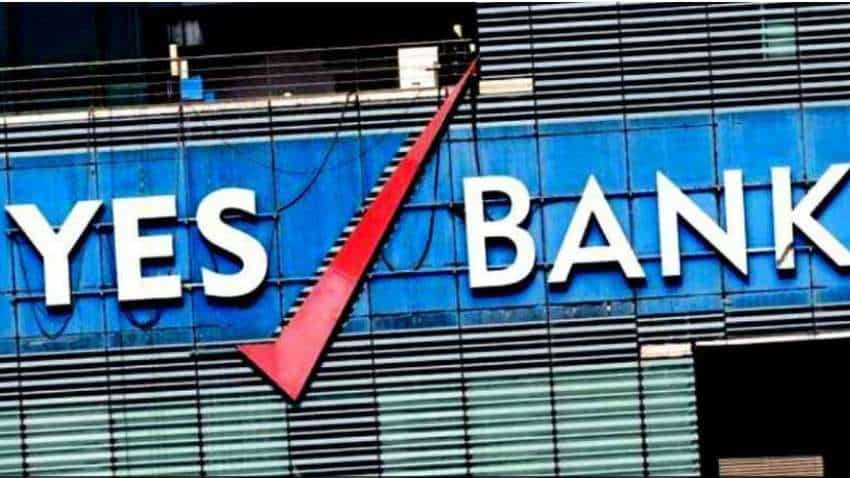Stable Outlook! Ind-Ra upgrades Yes Bank’s long-term issuer rating to ‘IND BBB’ - SIGNIFICANT IMPROVEMENT!
Ind-Ra expects Yes Bank to continue improving its operating metrics and liability profile over the next few quarters as it continues making provisions for COVID-19 related impact on its portfolio.

India Ratings and Research (Ind-Ra) has upgraded Yes Bank’s Long-Term Issuer Rating to ‘IND BBB’ from ‘IND BB-’, while resolving the Rating Watch Evolving (RWE). The Outlook is Stable!
India Ratings & Research has mentioned that the multi-notch upgrade and the resolution of RWE reflects a significant improvement in Yes Bank’s profile and operating metrics post its reconstruction in March 2020. The upgrade factors in the bank’s substantial equity raise; reduced concerns on immediate liquidity position as its funding profile moves towards stability; a strengthened board, and limited incremental credit costs from identified delinquent assets, as the bank has ramped up its provision cover.
Ind-Ra expects the bank to continue improving its operating metrics and liability profile over the next few quarters as it continues making provisions for COVID-19 related impact on its portfolio.
Ind-Ra also expects the bank to benefit from its association with its single-largest shareholder the State Bank of India (‘IND AAA’/Stable).
The agency believes it is critical for the bank to rebuild its loans and deposit franchise, as well as trust in the bank and its management to recover the bank’s franchise.
Key Rating Drivers
Reconstruction Exercise Measures Addresses Key Challenging Areas: In Yes Bank’s regulator-driven reconstruction in March 2020, the bank received Rs 100 billion equity infusion from domestic banks, led by the SBI with Rs 60 billion for 48.21 per cent stake. Most of the proceeds from this infusion as well as the write off of additional tier-1 bonds, of about Rs 85 billion, were used to boost provisions.
The bank also received substantial liquidity support in the form of Rs 500 billion refinancing from the Reserve Bank of India (RBI) in March 2020 and liability support on certificates of deposit and interbank lines from the financial eco-system. As of end-July 2020, the bank had repaid 70 per cent of the refinance lines to the RBI.
The bank has raised additional equity of Rs 150 billion since March 2020; the proforma common equity tier-1 (CET-1) of the bank for 1QFY21 was 13.4 per cent (6.5 per cent without adding the fresh equity raise).
See Zee Business Live TV Streaming Below:
The bank’s new, post-reconstruction, the board has two serving and one former officers from the SBI; the latter – Prashant Kumar- the former chief financial officer of the SBI and is now the chief executive officer of Yes Bank. The new board is focused on improving governance and compliance; regaining its liability franchise, and building a sustainable loan and transaction business franchise.
The bank is also exploring hiving off a large portion of its non-performing assets and non-performing investment book into a separate legal unit to manage it more efficiently, release some capital and reduce the need for ageing-related provisions.
Ind-Ra expects the bank’s association with the SBI to help rebuild trust in the management as well as the overall institution of Yes Bank. Ind-Ra believes this could assist the bank to rebuild its liability and deposit profile, strengthen access to debt capital markets and interbank markets, and rebuild its franchise.
Strengthened Capital Buffers; Limited Incremental Credit Costs from Identified Stressed Assets: Yes Bank reported substantially better-than-historical levels of proforma CET-1 capital of 13.4 per cent at end-1QFY21 (March 2020: 6.3 per cent), and provision coverage ratio of 75 per cent (2QFY20: 43 per cent).
As the bank has taken accelerated provisions on the majority of its stressed book, Ind-Ra expects marginal near-term ageing provision requirements, giving the bank the ability to build provisions for COVID-19 related stress. The agency believes the restructuring guidelines could help the bank manage its COVID-related stress and help spread its impact over two years.
Ind-Ra believes 7.7 per cent of the banking system advances could be restructured in FY21 and the restructuring quantum could be greater, given its higher exposure to real estate, hospitality and micro, small and medium enterprises.
The bank has residual/legacy additional tier-1 bonds and upper tier-2 bonds, whose coupons the bank was unable to pay in 4QFY20 and 1QFY21 as it was not compliant with the minimum capital and profitability levels. Post the capital infusion, the bank was able to pay the cumulative coupons on the upper tier-2 bonds. Ind-Ra believes the bank will be able to service these coupon payments as it is in compliance with the capital requirement and will post modest profits in FY21.
Operating Performance likely to Improve Gradually: In the medium term, the bank will focus on the resolution of corporate stressed assets, non-corporate segments and transaction banking, mainly in the corporate segment, to generate current account float and granular fee income streams. This, the agency believes, along with a changing portfolio mix - large corporate portfolio expected to constitute 40 per cent of the bank’s advances in the medium term (1QFY21: 55 per cent) - could offset the declining yields on the portfolio.
The bank is offering 1.5-2 per cent higher deposit rates than other higher-rated private sector banks. The agency believes the bank’s non-interest income stream and current account deposit accretion could have adverse impactd by the new RBI circular, which states that CA accounts can be opened in lending banks.
Ind-Ra expects the bank’s pre-provision operating profits to be between 2.5-3 per cent in the medium term while credit costs could be 2-2.5 per cent, assuming the bank will continue building up provisions for the assets expected to be restructured under the restructuring guidelines. The aforementioned factors, along with the lower requirement of ageing provisions and restructuring viable stressed assets gives the bank financial ability and time to make provisions for stressed assets in a post-COVID-19 environment. Hence, Ind-Ra expects the bank to post modest profits in FY21.
Liquidity Indicator – Adequate: As the bank is building back its liabilities and deposit profile, it has also complied with statutory liquidity ratio (SLR) and liquidity coverage ratio requirements; its SLR improved above-regulatory compliance levels (March 2020: 10 per cent) and liquidity coverage ratio to about 114 per cent at end-June 2020 (40.4 per cent). The bank has made a provision of Rs 3.3 billion for SLR non-compliance and would be required to pay the same to the RBI, if required.
The bank’s short-term liabilities exceeded the short-term assets by 15 per cent of total assets at end-June 2020 and is manageable in the agency’s opinion. Most of this gap is on account of the scheduled repayment of Rs 450 billion to the RBI in 2QFY21, part of which has already been repaid. With low growth in advances, Ind-Ra expects the deposit pricing to help the bank manage the tenor of liabilities and improve the balance sheet liquidity position while providing the bank with time to enhance access to interbank and debt capital markets.
Get Latest Business News, Stock Market Updates and Videos; Check your tax outgo through Income Tax Calculator and save money through our Personal Finance coverage. Check Business Breaking News Live on Zee Business Twitter and Facebook. Subscribe on YouTube.
RECOMMENDED STORIES

Top 7 Mutual Funds With Highest SIP Returns in 1 Year: Rs 33,333 monthly SIP investment in No. 1 scheme has generated Rs 4.77 lakh; know about others too

Top 7 Mid Cap Mutual Funds With Highest SIP Returns in 10 Years: Rs 13,333 monthly SIP investment in No. 1 fund is now worth Rs 67,61,971

Coca-Cola & Domino's-backed food delivery startup loses battle to Zomato & Swiggy; shuts down consumer app

Rs 4,000 Monthly SIP for 33 years vs Rs 40,000 Monthly SIP for 15 Years: Which can give you higher corpus in long term? See calculations

Sukanya Samriddhi Yojana vs PPF: Rs 1 lakh/year investment for 15 years; which can create larger corpus on maturity?
07:57 PM IST








 RBI imposes monetary penalty on these two banks, check details
RBI imposes monetary penalty on these two banks, check details D-Street Newsmakers: Yes Bank, Tata Motors among stocks that buzzed most on November 16
D-Street Newsmakers: Yes Bank, Tata Motors among stocks that buzzed most on November 16 Yes Bank introduces UPI payments through its RuPay credit cards; Know how it works
Yes Bank introduces UPI payments through its RuPay credit cards; Know how it works Yes Bank Q1 Results: Bank's net profit rises 10% to Rs 343 crore; total income jumps 29%
Yes Bank Q1 Results: Bank's net profit rises 10% to Rs 343 crore; total income jumps 29% RBI rejects appointment of Akash Suri as CEO of Yes Bank-JC Flowers ARC: Sources
RBI rejects appointment of Akash Suri as CEO of Yes Bank-JC Flowers ARC: Sources